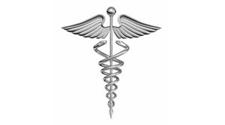Treating Sunburn

Tips For Treating Sunburn
Knowing a few facts about treating sunburn will come in handy at one time or another for most of us. We either get a sunburn, usually mild, when spending longer in the sun than planned, or when out on the water or in the snow. We forget sometimes that we can get a sunburn from reflected sunlight, and even get one on cloudy days. The best times to get a good sunburn is often the first hot sunny day of spring, which calls for T-shirts and shorts, and a carefree attitude. Later on, or the next day, the consequences are felt.
Treating A First Degree Sunburn - Just as there are three degrees of burns, there are three degrees of sunburn. Fortunately, the majority of the time we only suffer a first degree burn and the treatment is fairly uncomplicated and straightforward. When treating sunburn of this degree, the focus is mainly on cooling and soothing the burned area, which may be red, but the skin has not been damaged, not are there blisters. Applying something cool to the affected area, like a compress or just cold water, will draw away heat, which is the primary goal.
Treating A Second Degree Sunburn - If either by design, or by accident, you've been out in the sun way too long, you may find yourself with a second degree sunburn. Treating sunburn of this also involves applying something cool to draw away heat, as you would with a first degree burn. A lotion, such as aloe vera is also recommended, first because it acts as a soothing agent, and second because of its healing properties. With a second degree burn one will often get blisters on the skin, and at times even swelling. If a significant area, such as the back, has been burned, a cool shower will help. Avoid an ice cold shower however, as this could result in the burn victim going into shock. Think cool, not icy. If the blisters are small, under three inches in diameter, the sunburn can usually be treated at home. The main thing is to avoid breaking open a blister, which might invite an infection. If any blisters are three inches or larger across, it would be best to see a doctor or visit a clinic, and let them prescribe treatment. Also, by all means see a doctor if a significant area of the body has a second degree burn, or if the burn victim is feeling ill. If treatment can be done at home though, an oatmeal or chopped potato compress applied to localized areas can often provide sufficient relief. In addition, the burn victim should be drinking plenty of fluids. This helps avoid running a fever, as well as helping the body deal with trauma.
There are numerous moisturizing and soothing agents available over the counter one can use. Avoid oil-based products however. The skin needs to be able to breathe freely, and an oil-based lotion can prevent this.
Treating A Third Degree Sunburn - A third degree sunburn is for the most part a rarity. We usually get out of the sun, even before developing a second degree burn, if we can. A third degree sunburn involves damage to the skin, and not just a few blisters. The skin is actually burned or charred. The only meaningful way of treating sunburn in this instance is to see a doctor as soon as possible. Any delay could result in permanent damage to the skin. If a person is badly burned, other complications can of course arise. For a third degree burn, home remedies are going to be of little help beyond possibly giving the sunburned person some relief until professional help is available.